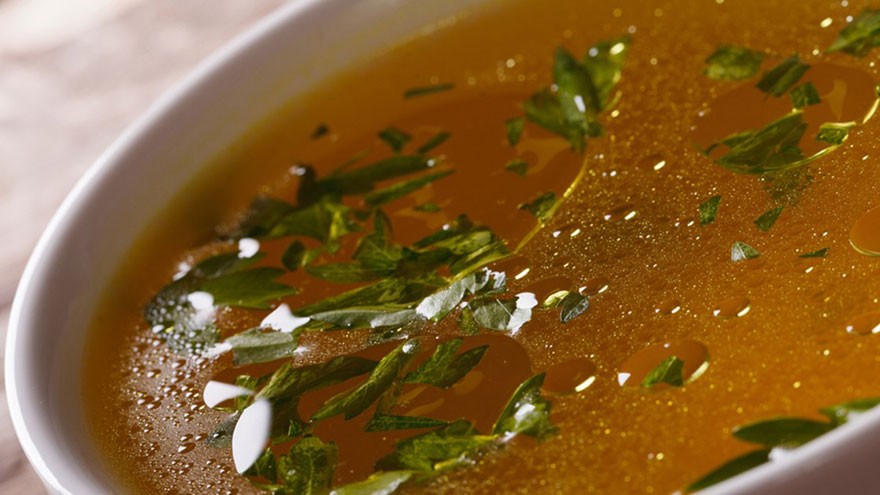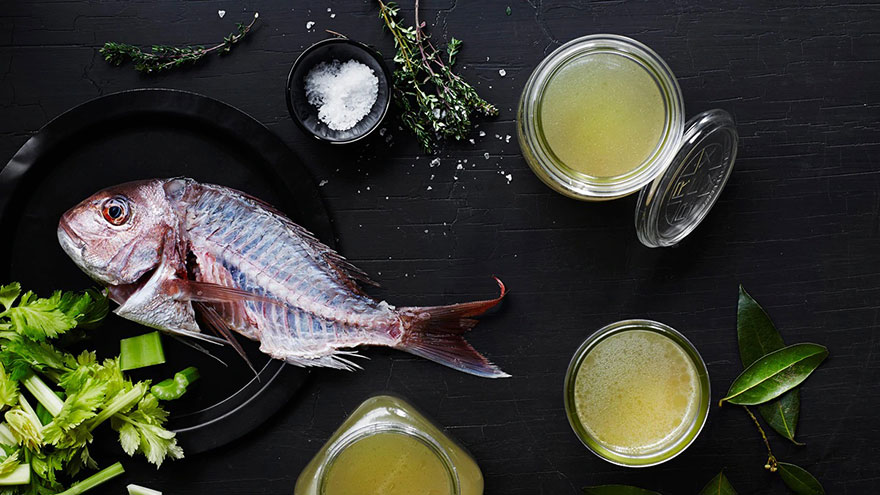Making Home Made Stock
Just as a store bought tomato can’t compare to a garden fresh tomato, so store bought stock can’t compare to home made stock.
The good news is, stock is easy to make, uses up leftover food, and can be frozen for about four months. (You may also can stock using a pressure canner.)
How to Make Chicken Stock
Take the carcass (bones and scraps of meat) of a four or five pound whole chicken or turkey and either fresh vegetables or left over ones.
Feel free to experiment with the vegetables, but aim for about one large onion, three chopped carrots, four stalks of celery cut into chunks, one tablespoon of whole black peppercorns, and between six and eight chopped garlic cloves.

Place all the ingredients in a large pot, cover with water, and simmer for about two hours, skimming off the foam periodically. Add water, if necessary, to keep the ingredients covered.
Strain the broth to separate the solids from the liquid and refrigerate for two or three hours. The fat will rise to the top of the pot; scoop it away. Use the stock within a few days, or freeze or can.
How to Make Beef Stock
The process for making beef stalk is basically the same as the one for making chicken stock. However, as with all stocks, if you want the stock darker and richer, roast the meat, bones, and vegetables in the oven for about 45 minutes at 450 degrees F. before you do anything else.
Place about five to seven pounds of meat and bones in a large pot. (Beef, lamb, pork, ham, veal, or venison all work.) Add approximately two large chopped onions, four large carrots cut into chunks, four stalks of celery cut into chunks, one chopped up head of garlic, two large tomatoes cut into chunks, one tablespoon of whole black peppercorns, four dry bay leaves, ½ cup fresh flat-leaf parsley, and any seasonings you desire (oregano, thyme, and basil are good choices). Add enough water to cover everything.

Simmer for around four hours, stirring occasionally. Add water, if necessary, to keep the ingredients covered. Strain and refrigerate for about two or three hours. Skim off the fat and use within a week, freeze, or can.
How to Make Vegetable Stock
You may use nearly any vegetables you like – but avoid broccoli, cauliflower, and cabbage, which have too strong a flavor for a useful stock. Tomatoes (which are often confused as a vegetable, but are actually a fruit) also should not be used except in small quantities. Fresh vegetables work well, but peelings and left overs are useful, too.
Good choices for vegetable stock include garlic, onions, green onions, potatoes (including sweet potatoes), carrots, celery, squash, zucchini, mushrooms, corn (and corn cobs), peas, green beans, beets, plus herbs like parsley and basil. Also add about a tablespoon of whole black peppercorns and a couple of dry bay leaves.

Make your pot half full of vegetables and half full of water. Simmer for around an hour and strain. Use within a week, or freeze or can.
How to Make Fish Stock
Like all other stocks, scraps work just fine. The seafood used needn’t be expensive and may be in the form of fish, shrimp, crab, or lobster and shells.
Use about four or five pounds of seafood, two tablespoons of butter, two large chopped onions, four chopped garlic cloves, one chopped stalk of celery, ½ cup of chopped flat-leafed parsley, one tablespoon of lemon juice (fresh is best), and one teaspoon of whole black peppercorns. You might also add a cup of dry white wine.

Melt the butter in the bottom of a large pot. Sauté the garlic, onion, and celery until soft. Place all the remaining ingredients in the pot and add about a gallon of water.
Simmer for around an hour, skimming off any foam periodically. Strain, and either use within a week, or freeze or can the stock.
Check out the video version of this article on YouTube : Making Home Made Stock

